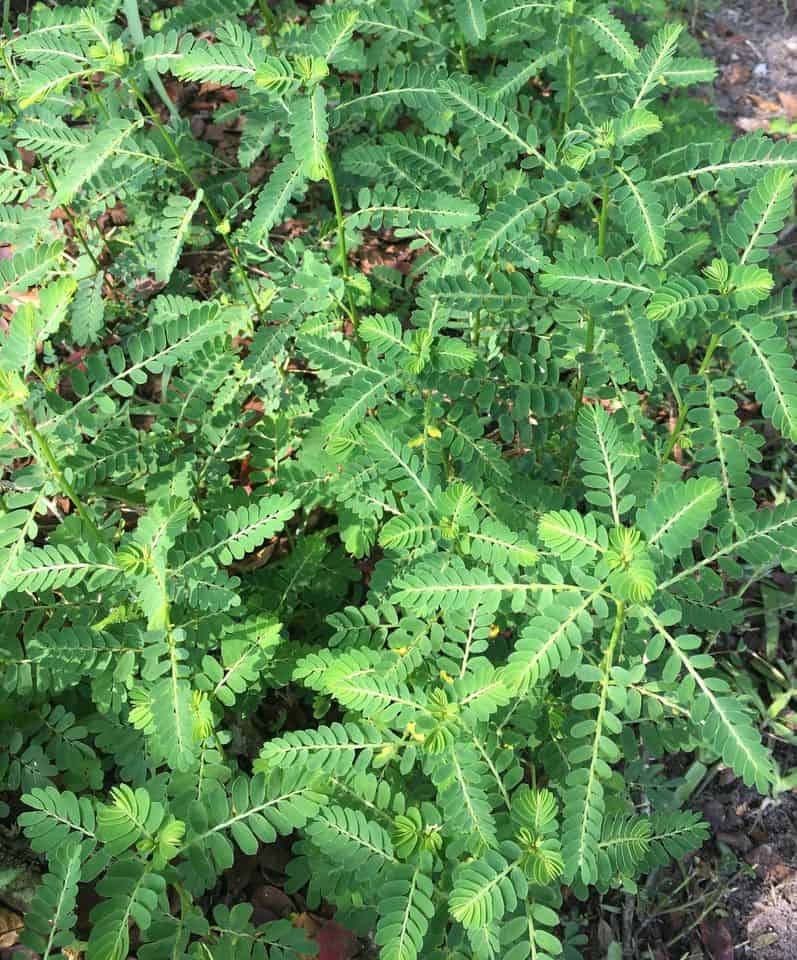Chamber Bitter is also known as Gripeweed, Shatterstone, Stonebreaker, or Leafflower. It is a common broadleaf weed that grows in warm soils in early summer.
Weeds are every gardener’s nightmare. Gripeweed/Chamber Bitter weed is the darkest of such nightmares.
They literally appear overnight in landscaped gardens.
It grows quickly and is tolerant of drought. Some manual methods may prove useless as the seeds will explode and the weed spreads even more.
It’s not possible to completely rid your garden of this weed. You can totally manage its spread though.
| Aspect | Information |
|---|---|
| Identification | Belongs to the spurge family, produces seeds early, slender shrub with alternate oblong leaves, reddish stems |
| Growth Characteristics | Rapid growth, tolerant of drought |
| Spread Prevention | Manual removal of young weeds, pre-emergent herbicides |
| Lawn Treatment | Atrazine and Isoxaben for lawns |
| Flower Bed Treatment | Isoxaben for established flower beds, Glyphosate for spot-spraying |
| Growth Conditions | Common broadleaf weed in warm soils during early summer |
| Habitat | Typically found in ornamental beds and turfgrass |
Manual Removal
Pull Chamber Bitter weeds out by hand as soon as you see them. It’s quite easy to pull these weeds when they are young as they are not supported by any underground rhizomes or bulbs.
If these weeds are in the landscape beds, pulling them manually will be a tad bit safe.
Water the soil a day before you wreak havoc on these weeds. It’ll be easier to pull them out.
What kills Chamber Bitter in the lawn?
Pre-emergent herbicides like Atrazine and Isoxaben can be used to kill Chamber Bitter in the lawn without harming the lawn grass.
Hand pulling of these weeds may not be ideal in all cases. It’s only ideal when the seeds aren’t produced and the weeds are young.
In such cases, chemical control is the only option. Always wear safety gloves, glasses, and other accessories before applying herbicides.
Pre-emergent herbicides
As you know pre-emergent herbicides work to prevent new weeds from sprouting. So, timing is critical.
Pre-emergent herbicides work well on annual weeds like Gripeweed/Chamber Bitter weed.
Note: Spray a pre-emergent in April for the best results.
Atrazine can control weed growth in Centipede grass and St.Augustine grass. Spray it on areas where you saw the Chamber Bitter weed in the previous season.
Spray Atrazine when the grass is green so as to cause the least harm to the turf.
Isoxaben works well on Gripeweed(Chamber Bitter).
This is a selective herbicide and works on the weed in tall fescue, centipedegrass, St. Augustinegrass, bermudagrass, and zoysiagrass lawns.
Isoxaben comes in granule form. Water the areas well after you treat them with granules. This helps it sink into the soil and prevent weeds from emerging.
Post-emergent herbicides
Use post-emergent herbicide on young weeds. Established weeds are harder to get rid of.
Atrazine works well for the eradication of Chamber Bitter weed in St.Augustine and Centipede grass lawns. It has both pre-emergent and post-emergent properties.
Spray it once more after 30 days of the first application. This will take care of the weeds.
What kills Chamber Bitter in the flower beds?
You can use Isoxaben in flower beds to prevent Chamber Bitter weeds from sprouting. Use this herbicide only in established flowerbeds. You can spot-spray Glyphosate in flowerbeds to eliminate Chamber Bitter weeds.
You need to be careful when dealing with Chamber Bitter in your flowerbeds. You don’t wanna hurt your ornamentals.
Post-emergence herbicides
Glyphosate can be used to control Chamber Bitter weeds. As you probably know, Glyphosate is a non-selective herbicide.
Do not let it fall on any of your desirable plants. Do not spray when it’s windy.
Use low pressure when spraying and keep the nozzle close to the ground. Spot spray the weeds!
Tip: You can use a cone-shaped shield to surround the nozzle, so only the select plant is sprayed.
Shields can be made from bottomless two-liter water bottles. Alternatively, you can cover your ornamentals with cardboard.
I recommend Glyphosate as you can spray it without any doubt in ornamental beds.
Glyphosate will not get into the soil, it won’t get absorbed by the roots of ornamentals. So, there’s no way you could harm the ornamental plants.
Pre-emergence herbicides
Isoxaben can be applied in landscape beds if the plants are well established. It’s better to apply pre-emergent below the mulch as that’s where the weed seeds are.
Do not spray Isoxaben on landscape beds where you plan to plant new plants. Applying pre-emergents will deter their growth.
You should spray pre-emergent herbicides in late April and once again in mid-June.

How to prevent Chamber Bitter?
Preventing Chamber Bitter in the first place is ideal. You shouldn’t be fighting weeds. It takes a lot of time and you have to shift focus away from the things that matter.
Spraying pre-emergents works well as we talked about before. But ideally, you need to practice natural ways to achieve this.
Within landscape beds, apply 2-3 inches layer of mulch. This doesn’t let sunlight reach the soil, where the seeds are actually present.
You need to maintain a healthy lawn in order to control this weed. If turf is properly mowed then there will be no scope for the weeds to thrive.
Some people eat it as it doesn’t release white milky sap as other spurges do.
What does Chamber Bitter look like?
Make sure you are dealing with Chamber bitter. If you misidentify it, it will cost you both time and money.
Here are a few pointers which help to identify the plant.
- It belongs to the spurge family. People often confuse it with the Mimosa tree as its leaves look similar.
- It produces seeds when it’s just an inch tall. The seeds are attached to the lateral branches at the axils of leaves.
- Chamber bitter is a slender shrub with alternate leaves that look oblong.
- The stems branch out and can be reddish in color.
Use these pointers and the image to identify the weed properly.
Where do you find this weed?
After you identify it correctly, it’s time to look where it grows.
You’ll also come to know why it invaded your garden/lawn in the first place and how severe the infestation is.
It usually appears in warm conditions, i.e., May or June. You’ll most probably find them in Ornamental beds and turfgrass.
Chamber bitter grows upright and develops a strong taproot system over time.
Is Chamber Bitter poisonous?
Chamber bitter weed isn’t actually poisonous. It has medicinal value.

